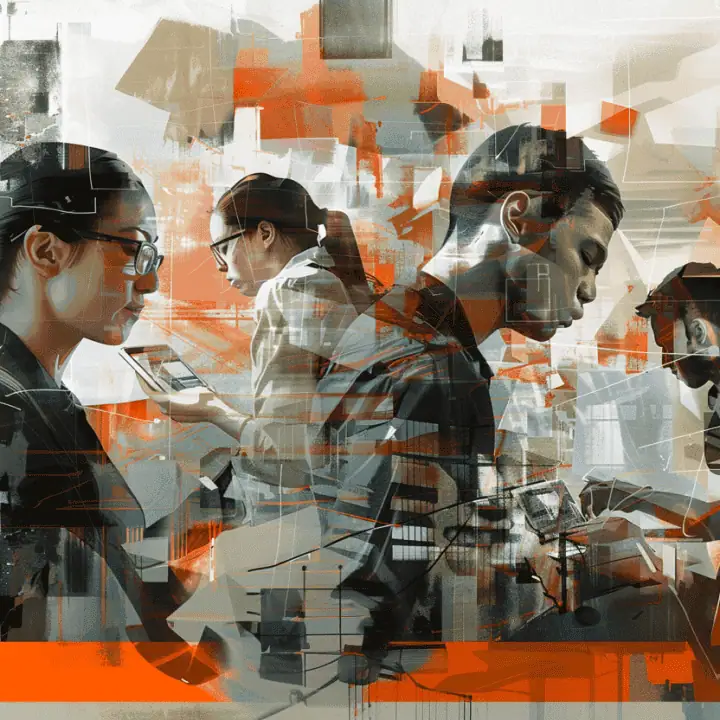Apply leverage to your attention for productivity by choice
‘Pay attention. You won’t find the answer on the ceiling’
‘Pay attention. You won’t find the answer on the ceiling’. The teacher’s admonition cut across a child visualising the answer to a math problem. The child was attending, working out the problem using implicitly learned rules and making mental images in the most natural place. The teacher expected the students to be bent over their desks, calculating into an exercise book or on a screen. Unfortunately, relatively few people appreciate that visualisation is most accessible when looking upwards, and teachers want to see recognisable evidence of compliance.
Visualising to do calculations is a very effective way of using our attention for calculating. It is faster than using writing and saves paper. Most people rarely notice how they use their attention, so there is little awareness in the general population that attention can be subject to deliberate application.
“There is little awareness in the general population that attention can be subject to deliberate application.”
Consider the child in the example. She had no idea that she was making calculations using rules and images outside of conscious awareness, only that they worked. Her teacher had no knowledge of how the child did it, only that she wanted to see the child’s workings written on a page. The child could not present her workings and eventually stopped presenting answers. No one thought to give the child an explicit description of the rules she had discovered implicitly and subsequently stopped applying. If they taught these, she and others would be able to derive the workings for any problem in the set governed by those rules. Then they could generalise and use their attention to discover the principles governing other sets of facts and figures.
If people learned to attend to the process of how something works, they would be able to produce multiple examples from first principles. Currently, most formal learning at school level focuses on knowing facts and figures. Only a few students manage to infer the underlying principles from exposure to a collection of related facts and figures. Yet many of the facts and figures can be inferred from the principles. They make sense in light of the principles, thereby becoming inherently more memorable.
What is attention?
Attention is awareness of activity occuring in the world around us and/or in our internal experience. We use our senses to detect movement in the world and then process what we detect via neural pathways. This experience is as if we have direct contact with the world. This is sensory input and is our first access to incoming data. It is a common experience for small children and a rare experience for most adults.
The author, Carlos Castaneda, alluded to first-access experiences when referring to a ‘Stop the World State’ as part of shamanic training. You can have a similar experience by extending your peripheral vision to its extremes on both sides and up and down while focusing on the far distance. This will reduce your internal dialogue (verbal thoughts) and allow you to experience the world with minimal categorical filtering. It is a delightful and absorbing experience. If you go for a walk in a Stop the World state, take someone with you so you do not have to attend to safety and traffic while in the state.
We filter incoming data routinely to avoid overloading our attention and to reduce mental effort. For example, we expect a chair to take our weight when we sit on it and we know to sit on it because it is a ‘chair’. Linguistic filters name and categorise everything we have encountered before that otherwise would have been experienced at first access. Our knowledge, beliefs, and values frame what we attend to and how much attention is given to any concept or object. The generic name for the filters we use to order our world is: ‘Perceptual Filters’. They are used to classify the raw, incoming data to attribute meaning, relationships, and other groupings of inclusion, exclusion, and value.
Any form of perceptual filtering reduces the amount of information we accept into our systems, and its function is to protect us from too much simultaneous input and enable efficient mental processing. When it is done automatically, using low-grade classification systems, and without deliberate periodic review, we can become inflexible, or at worst, stereotyped utterers of platitude. At its best, perceptual filtering allows us to learn new and interesting material, classify existing knowledge in flexible and accessible sets (including sets of sets), and use patterns of excellence as the frames in which we operate.
The quality of attention we apply and the selection of filters we use to limit it can be enhanced with exposure to different frames of reference and more effective classification patterns.
By Jules Collingwood, NLP Trainer at INSPIRITIVE Pty Ltd.
Attention Training Articles
- Apply leverage to your attention for productivity by choice
by Jules Collingwood - 5 elements to enhance the quality of your attention and further your outcomes
by Jules Collingwood - Creating meaningful change and altering the way you represent the world
by Jules Collingwood - How you attend to the world can transform your performance in it
by Jules Collingwood - How using your attention can change the quality of your states (and vice versa)
by Jules Collingwood
(Note: If you would like to learn more about the New Code of NLP, you can get a copy of our latest Kindle book, ‘AEGIS: Patterns for extending your reach in life, work & leisure’ by Jules Collingwood, NLP Trainer. For only $4.99 here).
Related articles
Learn more about NLP by reading our Ultimate Compendium of NLP
If you found this article useful share it with your network.
Similar Posts
Subscribe Now!
Stay Up-to-Date with Our Latest Courses and Special Offers
Stay in the loop with new course releases and opportunities by completing our form. Never miss out!


